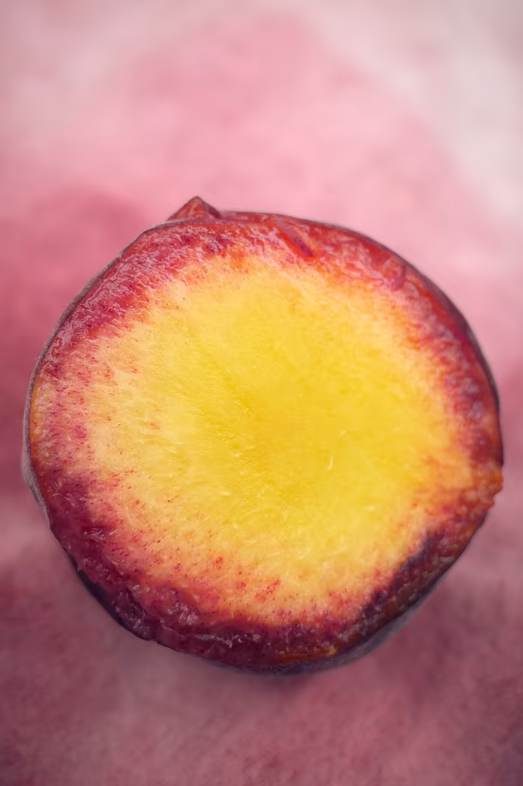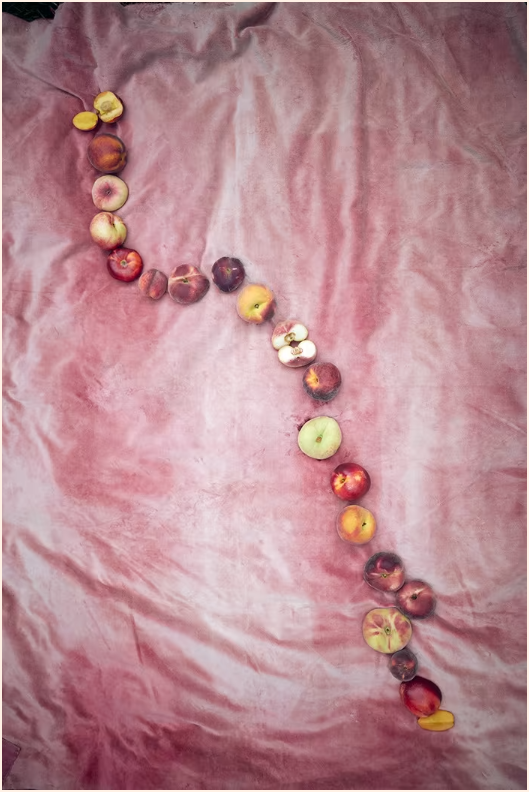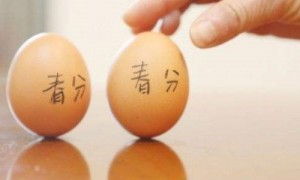Please use the sharing tools found via the share button at the top or side of articles. Copying articles to share with others is a breach of FT.com T&Cs and Copyright Policy. Email licensing@ft.com to buy additional rights. Subscribers may share up to 10 or 20 articles per month using the gift article service. More information can be found at https://www.ft.com/tour.
https://www.ft.com/content/9f0a4435-8d26-4e80-8819-9bbe814a58d6
When it comes to peaches I’m with Samuel Johnson, who was said by his close friend Mrs Thrale to eat seven or eight large peaches “of a morning before breakfast began”, then more after dinner. Even then Dr Johnson complained that “he never had quite as much as he wished of wall fruit” (the old English name for stone fruit such as peaches and apricots, because it was grown against walls to give the plant support and warmth).
There is a reason “peachy” is a synonym for excellent or fine. The experience of eating a ripe peach is unlike that with any other fruit, the gentle fuzz in your hand, perfumed juices dribbling. Whether yellow or white, round or flat, peaches can be so fragrant and melty that they are almost like gelato grown on a tree. There never seem to be enough of them before the summer is over.

Peaches and cream are underrated as a summer treat compared with strawberries. When you add a strawberry to cream, the acid in the berry seems to fight with the blandness of the cream, whereas soft peaches — sliced and sugared — seem to merge with cream, in both texture and perfume.
I felt vindicated in my love of peaches and cream when I read Nose Dive by Harold McGee, a brilliant scientific examination of smell which describes how both flavours are largely made up of molecules called lactones (also present in coconuts, apricots and some nuts). As McGee writes, “serve peaches with cream and you double down on lactonic richness”.
The trickier part is laying your hands on peaches worthy of the name, at least in the UK, where they come in two categories, sublime and disappointing. It isn’t always easy to tell them apart. Sometimes, a punnet of unpromising supermarket peaches (or nectarines, which are really just a smooth-skinned variety of peach) will turn luscious after a couple of days on a sunny windowsill, but some peaches go mushy without ever sweetening. Your best bet is to look closely at the skin and shun any peaches with even a hint of green. In The Cook’s Encyclopaedia Tom Stobart notes that “if they are greenish when bought, they will never ripen at home”.
In TS Eliot’s 1915 poem “The Love Song of J Alfred Prufrock” the narrator wonders, “Do I dare to eat a peach?”, the suggestion being that its flesh might be too juicily sensuous to eat in public. Etiquette books of Victorian and Edwardian times advised polite eaters always to consume a peach with a fork, to avoid making a mess. Today, westerners may hesitate for the opposite reason, fearing the ones in the shops may be too hard, mealy or sour. Perhaps you hedge your bets by buying a “ripe and ready” pack from the supermarket chiller only to find that the coldness has killed the flavour.

Please use the sharing tools found via the share button at the top or side of articles. Copying articles to share with others is a breach of FT.com T&Cs and Copyright Policy. Email licensing@ft.com to buy additional rights. Subscribers may share up to 10 or 20 articles per month using the gift article service. More information can be found at https://www.ft.com/tour.
https://www.ft.com/content/9f0a4435-8d26-4e80-8819-9bbe814a58d6
There are still delicious peaches to be had in Britain in the summer months, mostly from Spain and Italy, although 2022 has been a difficult year for Spanish farmers after crops were hit by hard frosts in April. Ixta Belfrage is a chef who has collaborated with Yotam Ottolenghi and has just published her own superb first book, Mezcla: Recipes to Excite.
One of her recipes is for the easiest and most refreshing peach sorbet I’ve ever made. You freeze the peaches in chunks (no need to peel) before whizzing them in a food processor with an aromatic syrup made from roobois tea, sugar, water and lemon peel. The slushy pink sorbet that results tastes like the peach iced tea of dreams.
The recipe was inspired by Belfrage’s childhood, which was spent in Italy with her Brazilian-British family. She recalls the Italian summer peaches as “incredibly fragrant and intoxicating” with red skins and a “deep yellow egg colour” inside. They went into fruit salads, crostatas and tarts. Now that she lives in London, Belfrage tells me she can still find sweet, fragrant peaches as long as she chooses them in person, mostly from greengrocers (she likes the selection at Newington Green Fruit & Vegetables) rather than online.
I suspect we are more disappointed by bad peaches than we are by bad bananas, because even the greatest Cavendish banana is only mediocre, whereas a perfect peach is, well, perfect, with a fleshly quality William Morris described as “pinch-ripe”. In The Duchess of Malfi’s Apricots and Other Literary Fruits (2001), Robert Palter shows how many writers have been inspired by the peach’s furry and luscious form.
As with the current use of the peach emoji, many poems featuring peaches over the centuries have been obscene, using the cheeks and cleft of the fruit as a not-very-subtle metaphor for the curves of the human body. Even descriptions of peaches in fruit catalogues can get quite hot under the collar. In 1851, an American horticulture expert called Ebenezer Emmons wrote evocative lines about the Early Crawford peach that my editor strongly prefers you google.
It is in Asia that the glory of the peach is now most appreciated and where peach consumption, falling in the UK and US, remains buoyant. Peaches have been cultivated in Japan for 8,000 years and in China for more than 7,000 years. From there, they travelled to Greece, then Rome, where they acquired the name Prunus persica, based on a false belief that the fruit was Persian rather than Chinese.
They also found favour in France and Spain and would eventually travel with the Spanish to America. But no matter where in the world the peach has travelled, Chinese food culture remains the one that prizes the fruit the most (mostly white peaches rather than yellow). China is now by far the biggest peach producer in the world, accounting for more than 60 per cent of the global peach and nectarine crop.
In China, peaches are symbols not of sex but of long life (and fortune and good luck). “The roundness symbolises infinity,” Taiwanese-American food writer Clarissa Wei tells me. The reverence is such that, instead of a birthday cake, a Chinese person might be given longevity peach steamed buns (shoutao bao): fluffy dumplings, shaped like peaches and tinted a gentle pink colour with little green leaves attached to each.
Wei, whose cookbook Made in Taiwan will be published next year, has previously reported on a female master baker who creates intricate versions of celebratory peach buns featuring a giant central peach bun surrounded by a crowd of smaller peach buns; these are decorated with coloured dough to look like the branches of a peach tree. Longevity peach buns do not contain any actual peaches because cooking with them is not really a thing in Chinese cuisine.
Please use the sharing tools found via the share button at the top or side of articles. Copying articles to share with others is a breach of FT.com T&Cs and Copyright Policy. Email licensing@ft.com to buy additional rights. Subscribers may share up to 10 or 20 articles per month using the gift article service. More information can be found at https://www.ft.com/tour.
https://www.ft.com/content/9f0a4435-8d26-4e80-8819-9bbe814a58d6
A single honey peach — a particularly sweet variety of the fruit — can sell for as much as 50 yuan, about £6. Last year, a peach farmer in Yangshan township, known as the “hometown of honey peaches”, told a reporter from People’s Daily online that with the advent of online shopping, business was better than ever.
“We used to sell peaches by shouldering them to docks and train stations,” he recalled, but now he couriers his fruit to customers all over the country. Wei has observed a similar affection for peaches in Taiwanese food culture, though the heat of Taiwan is not suited to growing them (peaches need a certain number of hours at cool temperatures as they grow).
During her childhood in Los Angeles, Wei had a peach tree in her backyard and says she has never eaten peaches as juicy as those from that tree. “They were the size of a fist. It was such a wonderful thing,” she says. “My friends and I would climb on each other’s backs and pick them.” I ask her if her mother ever cooked with them, but she says she did not — they ate all the peaches just as they came, straight off the tree. “Culturally, I was never taught to do anything with peaches. When it’s fresh, you just want to enjoy it,” Wei adds.
Asia and the west have radically different ways of paying homage to the peach’s loveliness. As Wei remarks, “in China, there is a pursuit of finding the perfect raw peach”, whereas “in western culture you bake it into pies”. In her writings on growing up in Virginia, the food writer Edna Lewis observes that peach cobbler was “the great hot fruit dessert of the summer season that everyone looked forward to”.
Lewis’s cobbler, which I highly recommend is essentially a lattice-topped pie, as opposed to the type of “cobblers” that are topped with a scone-like dough. (I scale down the sugar a touch and use butter instead of lard in the pastry.) In her version, the peaches turn pink and syrupy in the oven and drench the bottom layer of pastry with their delicious fragrance. Lewis includes the cobbler as part of a menu to eat on a cool summer evening after a thunderstorm. Another of her peach ideas is to crush them with a potato masher and add them to vanilla ice cream.
Please use the sharing tools found via the share button at the top or side of articles. Copying articles to share with others is a breach of FT.com T&Cs and Copyright Policy. Email licensing@ft.com to buy additional rights. Subscribers may share up to 10 or 20 articles per month using the gift article service. More information can be found at https://www.ft.com/tour.
https://www.ft.com/content/9f0a4435-8d26-4e80-8819-9bbe814a58d6
Both the eastern and western approaches have their merits. The Chinese attitude of leaving well alone reflects the truth that a perfect peach cannot be improved upon. But there is also value in the western belief that peaches are so great that it’s worth spreading the peachiness around. “I don’t agree that there’s no point in cooking a peach,” says Belfrage.
She loves to add them to an Italian crostata with cherries and frangipane and an orange-polenta crust. She also finds yellow peaches to be delicious in savoury dishes, such as with cheese and olive oil or sliced with raw fish plus lemon juice and zest, chillis and fennel tops. Her only proviso is that whatever you do with a peach, you must start with a good one. “You can’t cook them into deliciousness. It’s impossible to poach or roast a peach into that perfect soft sweetness that you want,” she says. Sad to say, this is true. There have been many times when I attempted to redeem sub-par peaches by poaching them with expensive vanilla pods, only to find that I had basically recreated a canned peach, only less nice.
In a way, the best and easiest of all summer dessert recipes is a peach dropped into a glass of wine. It is near impossible to consume this with friends on a summer’s evening without feeling you are seizing the day. Time stands still when you are eating a perfect peach, all the more so when you are drinking one too. As Margaret Costa wrote in her Four Seasons Cookery book (1970): “Prick a small, rosy, white-fleshed peach all over with a silver fork. Put it in a large wine glass. Fill it up with chilled champagne. Look at it. Drink it. Eat the peach.”
The food writer Diana Henry based a whole cookbook around this pairing, How to Eat a Peach (2018). Henry first encountered it on a trip to Italy in her twenties, when she watched in wonder as people at a neighbouring table in a restaurant halved and pitted peaches and sliced them into glasses, adding cold moscato. “Then they ate the slices, now flavoured with the wine, and drank the wine, now imbued with the peaches,” she says. Like anything involving peaches, this works best with perfect ones. But if your peach should be less than sublime, at least you have a glass of peachy wine to console you.







